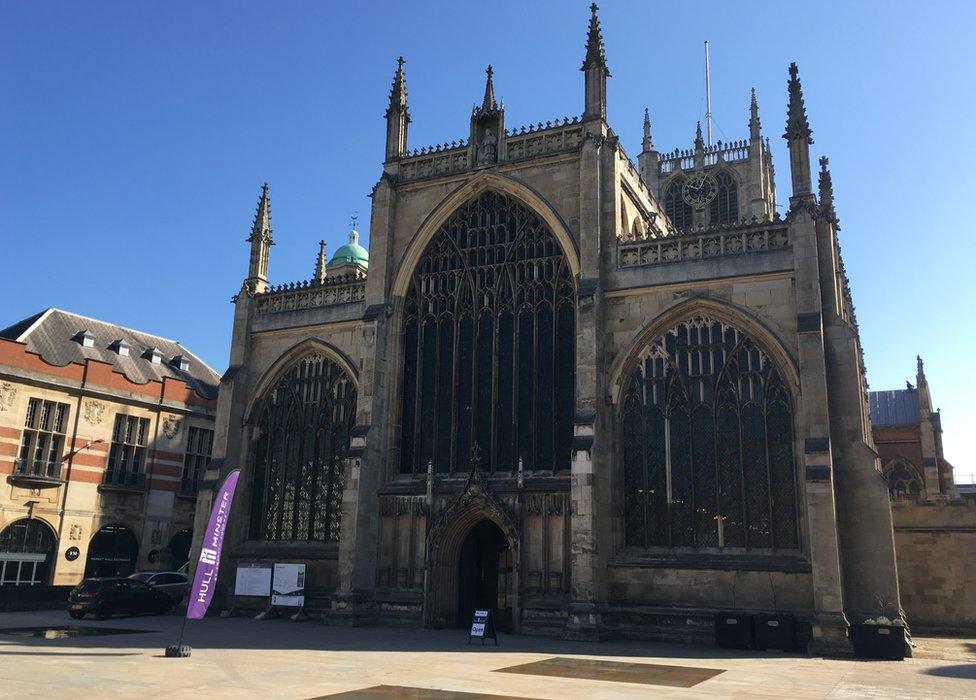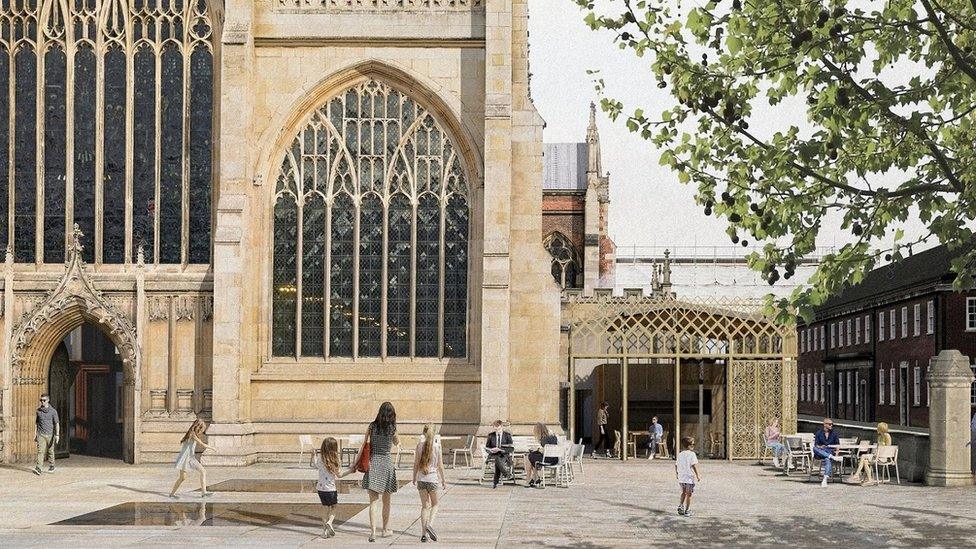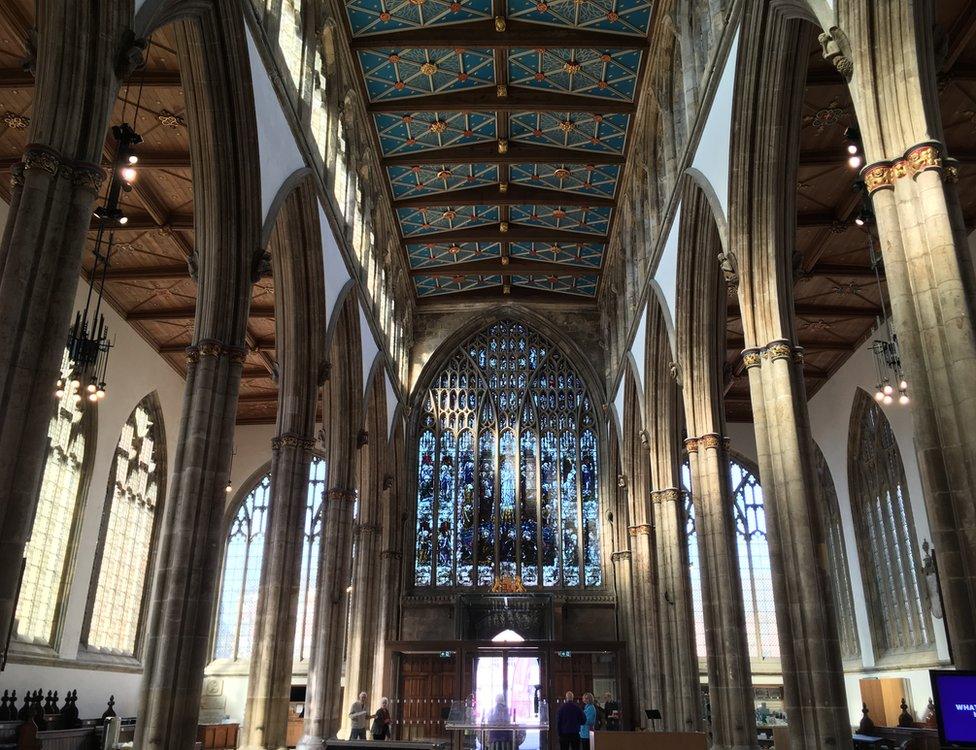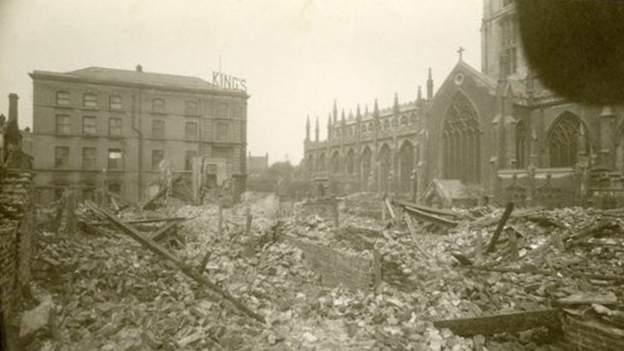Hull Minster: Visitor centre plans given £3.9m cash boost
- Published

Hull Minster wants to be "a hub for visitors and tourists"
Hull Minster has been given a £3.9m grant to create a visitor centre, cafe and exhibition spaces.
Highways England, which is providing the funding, said the money would help "safeguard the Minster's heritage for future generations".
The grant is part of the A63 Castle Street improvement scheme, which passes 100m (328ft) from the church.
The church has already spent £3.5m on restoring and remodelling its interior and creating a new outdoor space.
Under the plans, the money would go towards building a glass, bronze and stone extension on the south-west face of the church, which will house "a visitor and heritage centre with exhibition spaces, a café and other facilities".
An education and learning centre, disabled access and a community fruit and vegetable garden has also been proposed.

The church plans to build an extension on the side of the building

The extension will be made of glass, bronze and stone
Work on the new scheme is expected to start in the spring.
Vicar of Hull Minster the Reverend Canon Dr Neal Barnes said: "This is wonderful news for the Minster and the city of Hull.
"It will enable us to fulfil the Minster's potential to be a hub for visitors and tourists to the historic Old Town."

The church's interior was remodelled and restored as part of a regeneration project
James Leeming, senior project manager at Highways England, said: "It is a real pleasure to support an iconic venue like Hull Minster as part of our important work in the city."
In 2015, the church started a campaign to raise £4.5m for its regeneration project but only secured £3.5m.
The A63 Castle Street scheme is a £250m project to develop a key route in Hull by building an underpass at Mytongate and a footbridge linking the marina and city centre.
Work on the initiative has been delayed four times with the latest start date expected to be March 2020 and completed five years later.


Holy Trinity Church was saved by the wind when a Zeppelin dropped a bomb over Hull in June 1915
Hull Minster
The church was built in the 1300s, replacing an earlier chapel, after King Edward I granted the former settlement of Wyke a Royal Charter and re-named it Kings Town upon Hull
It is the oldest brick-built building in the city
Anti-slavery campaigner William Wilberforce was baptised in the church's font
During World War One, the church was saved from bombing on 7 June 1915 due to a change in wind direction.
Church windows were damaged during another raid in March 1916
In World War Two, the church was briefly used as an air raid shelter

- Published22 August 2017

- Published7 November 2016
